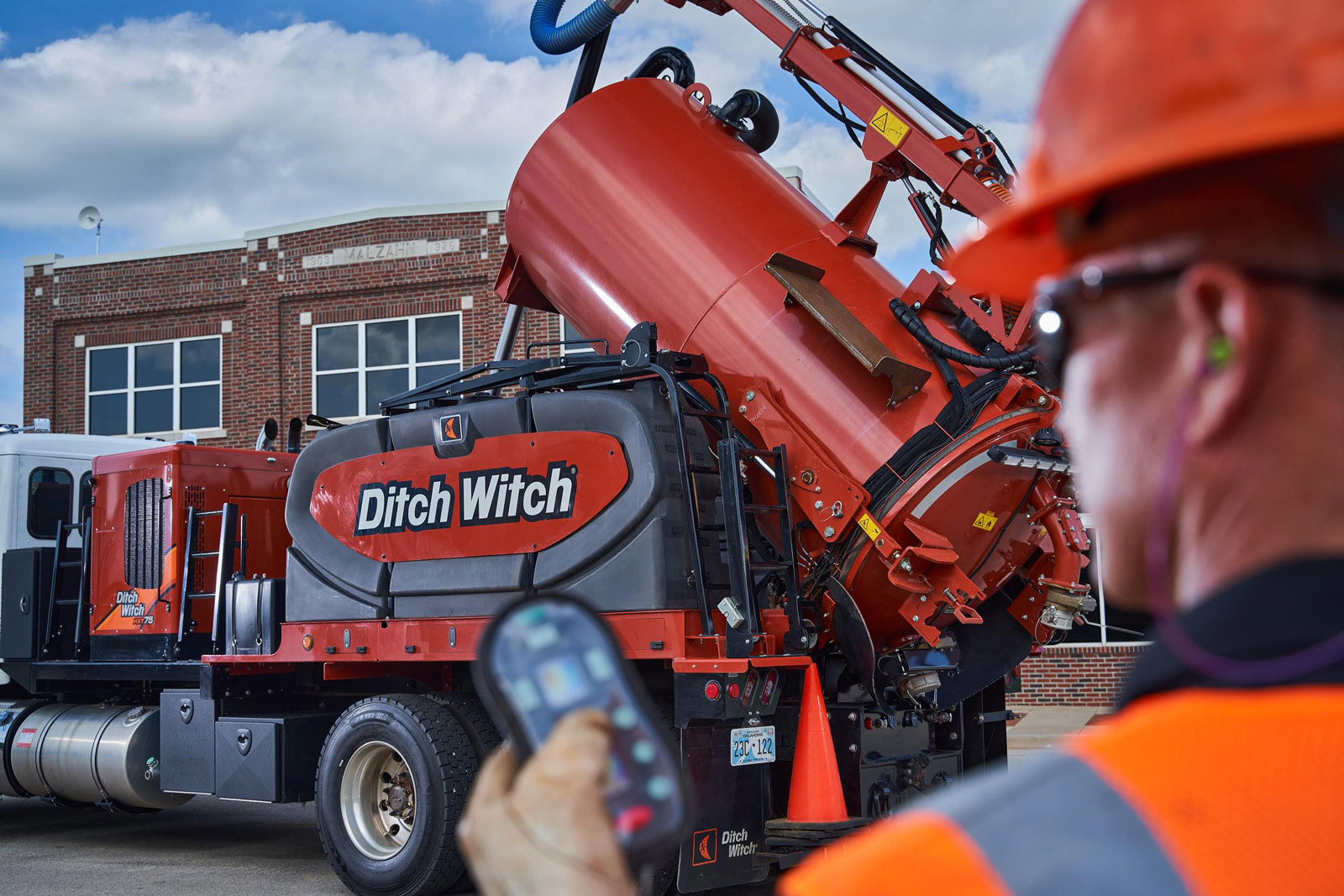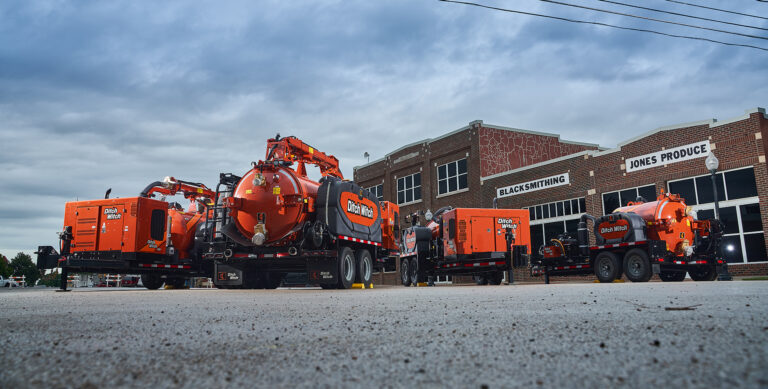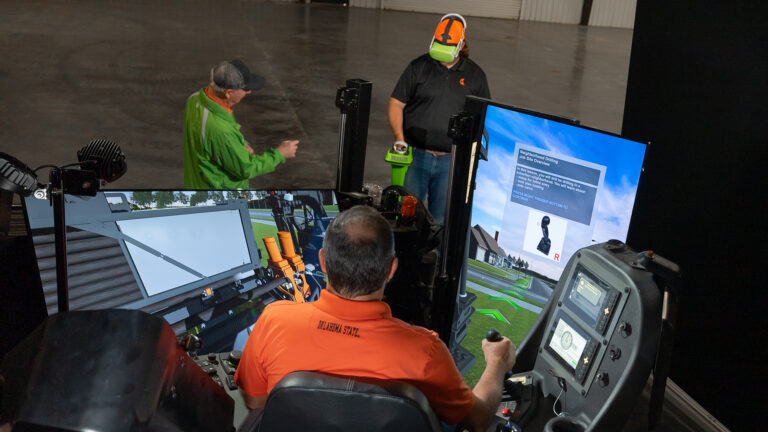By Chris Thompson
Vacuum excavators have become a popular option for landscaping jobs thanks to their ease of use and compact size, and their ability to take on a wide range of jobs.
These machines are a practical solution when you need to excavate near sensitive areas or in tight spaces, such as when opening a trench near a house, fence or shed. They can also help with specialized tasks, such as working in a flower garden or mulch bed. Using the machine’s suction tool, you can clear out mulch and debris without worrying about damaging flowers, grass or vegetation on a customer’s property.
Vacuum excavators are also often used for potholing or daylighting existing utilities. Underground environments have become so congested, there’s always a risk of hitting a utility if it’s not exposed. Some landscapers rely on hand-digging to expose utilities, but many utility strikes in residential jobs happen with a shovel. Vacuum excavators can provide a safer, more efficient option for exposing utilities.
Still, while vacuum excavators are designed for simple and safe excavation, every job is different. Factors such as job type and soil conditions will shape key decisions, such as if you should use a hydro or air vacuum excavator, what pressure settings to use, if you’ll need heated water, and more. That is why it’s important to understand and follow best practices.
Get The Most Out Of Your Machines
Knowing how to choose, configure and use vacuum excavators for different jobs – and how to maintain them for maximum reliability – can help you realize the full benefits of the machines on every job, make you more productive, and reduce the risk of unplanned downtime over the life of the machines.
Best practices can be broken down into three categories: job preparation, machine operation and maintenance.
1. Job Preparation
Whether you’re planting shrubs at a shallow depth or digging deeper to remove a tree, you must always call 811 before any digging job to confirm the location of existing utilities. Even after markings are down on a jobsite, err on the cautious side and verify the markings with your own locators.
Another crucial step before any job is to identify the ground conditions of where you’re working. Keep in mind that ground conditions can change not only from one jobsite to the next, but also within a single jobsite. Often, a vacuum excavator operator can begin a job in topsoil and then soon find themselves hitting clay.
Local dealers can help you understand what conditions you’ll encounter on a job. You can also look for visual cues, such as changes in soil patterns, to help identify ground conditions. Getting a glimpse of the natural landscape – even if it’s on Google Maps – can also provide clues. For example, valleys often contain clay, while hills typically have harder formations.
Knowing a jobsite’s ground conditions will help you decide if you need air or hydro excavation – or both – and the size of your water tank. Some tips for working in common ground conditions include:
- Topsoil and sand: Hydro excavation is more efficient in these conditions, making it the go-to choice when you want to do a job as quickly as possible. However, air excavation provides greater accuracy and doesn’t generate slurry, making it an ideal choice when you want to keep a hole clean or are working on a sensitive jobsite.
- Clay: Again, hydro-excavation is the more efficient option here, although it should be done with a boiler package.
- Rock and sandstone: Always use hydro excavation with a boiler package to cut through these difficult conditions, and consider investing in larger water tanks to reduce trips. Also, make sure you’re familiar with local slurry-dumping regulations and your nearby water-refill options. Using a machine that has a higher horsepower and greater capabilities can also help you more easily excavate in tough, rocky conditions.
2. Machine Operation
After you have the right machine, following best operating practices can help make sure you effectively and efficiently operate it, and reduce the risk of damaging it.
Before starting a job, make sure you’re using the proper nozzle configuration. For example, use a rotating nozzle, or oscillating nozzle, for hydro-excavation jobs. This nozzle delivers a circulating water stream that helps keep water moving and prevents excessive pressure from consistently hitting one area.
When excavating, start small and expand as needed. This can help make sure you only make a hole as big as what’s needed.
To avoid downtime, constantly move the nozzle around within the excavation area and keep the spray nozzle 8 inches from the ground or from the utility that’s being exposed. Holding the nozzle any closer, or directly applying the excavator to a specific area, could result in the nozzle becoming clogged or damage to an underground utility.
For pressure settings, keep hydro excavators below 2,800 psi and air excavators below 360 psi. If potholing, consult the utility owner. They may have their own requirements for using hydro or air excavation. For instance, some gas-line owners seeking to protect their lines recommend a maximum of 2,200 psi when using a hydro excavator to expose utilities.
3. Maintenance
A key benefit of vacuum excavators is that they are low maintenance – and in some cases nearly maintenance free.
The machines do have simple maintenance needs, such as standard oil and filter changes. But some vacuum excavators are intentionally designed to help reduce maintenance, such as by eliminating grease points, using liftoff power-pack doors to ease maintenance access and using filtration systems that minimize filter cleaning frequency. This helps ease burdens on your crew and keep your machines ready for the next job.
One important task you should do at the end of every day is dump and clean your machine’s debris tank and empty its freshwater tank. This can help prevent complications in a vacuum excavator that can impact its productivity.
Also, routinely check the machine’s cyclonic, debris and water filters for obstructions. In some cases, crews find they aren’t getting enough pressure from their vacuum excavator, and it’s because they have a clog in one of these filters.
Additionally, remember that proper machine usage can help prevent maintenance issues. When using an air excavator, for example, avoid putting the nozzle on the ground. This can lead to dirt getting into the nozzle, which can be difficult to clean out.
Also, never use the nozzle as a shovel. Putting the nozzle into the dirt can damage the wand and lead to costly downtime. If you’re struggling to excavate through hard ground conditions, use a hot water heater package to help break down the soil without applying additional water pressure. As a best practice, water temperature should stay below 150 degrees Fahrenheit.
Maximize Your ROI
With their high versatility and low maintenance, vacuum excavators can help you take on a wide range of landscaping jobs. And by following best practices, you can operate the machines more efficiently, increase your bottom line and ultimately take on more jobs.
Chris Thompson is a product manager at Ditch Witch with responsibility over the vacuum excavation product line. Thompson focuses on providing customers with innovative, customer-driven products and solutions with the goal of damage prevention and jobsite solutions. Before taking on the vacuum excavation product line, he covered the CUE and utility locator product lines. He holds a BA in Organizational Leadership from the University of Central Oklahoma and an MBA from Oklahoma Christian University.
Article originally appeared on Landscape-Business.com






